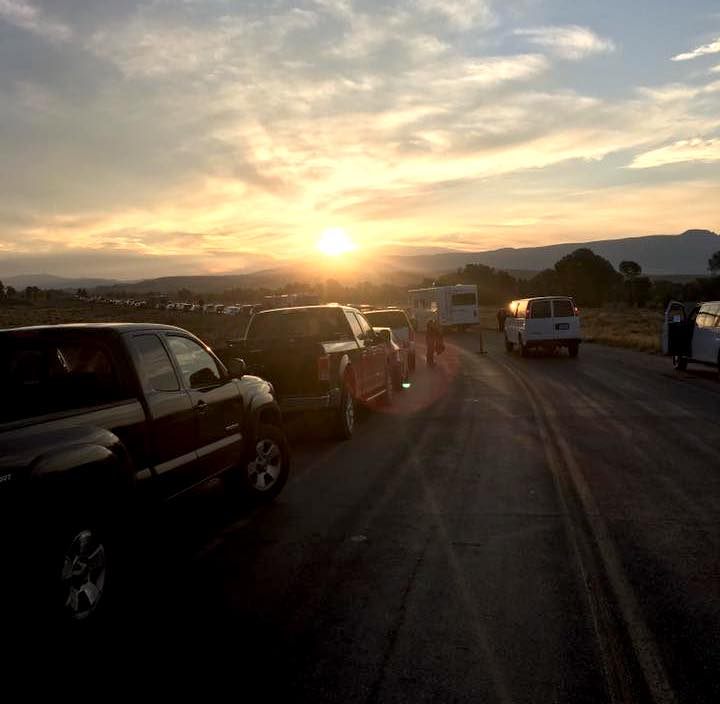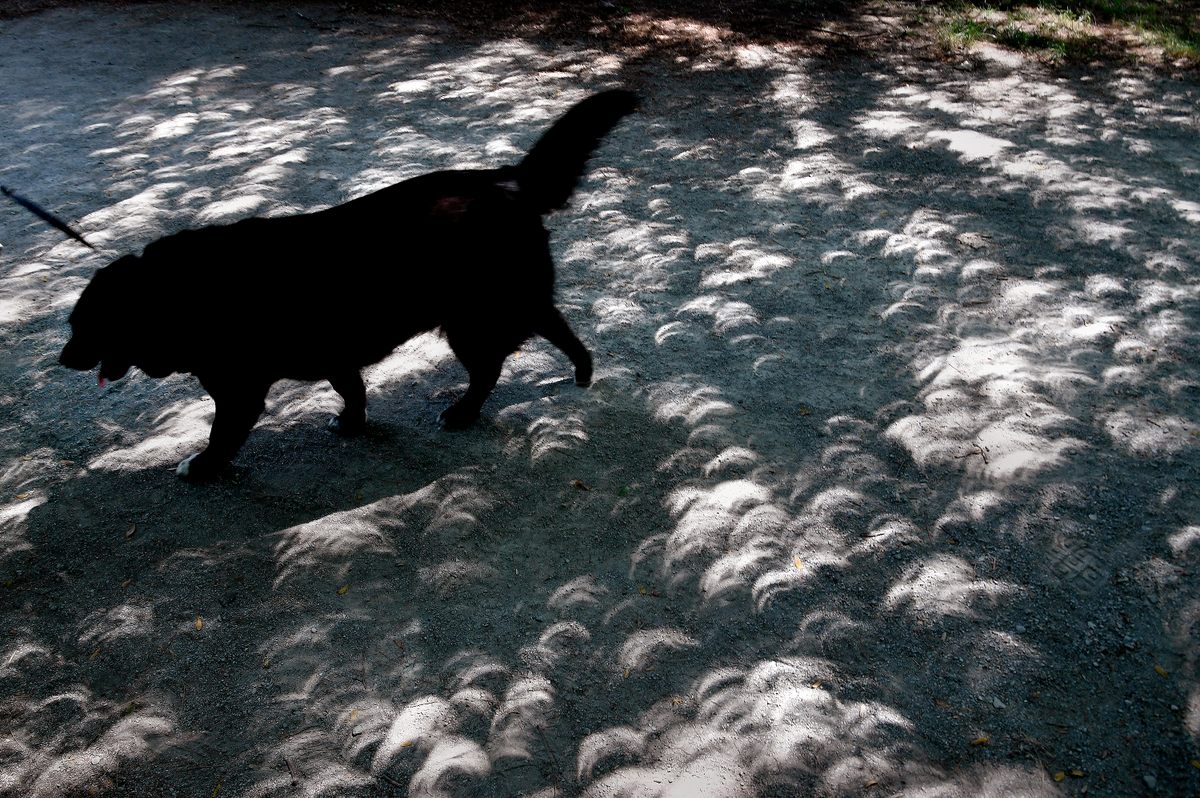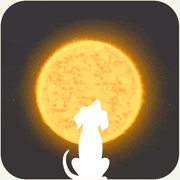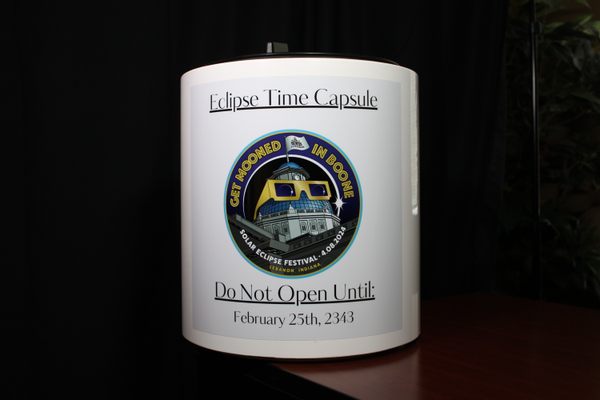Animal Behavior During a Total Solar Eclipse Is Wild
The 2017 eclipse across North America generated some surprising data.
When the moon got in the sun’s way in August 2017, people were expecting it. Many of us humans snapped up hotel rooms years in advance and traveled great distances to stand together for a few minutes in darkness. Millions more North Americans just gazed up wherever they happened to be, equipped with flimsy solar glasses (for gawking at the celestial wonder) and phones (for documenting their own awe).
We knew it was coming, but other animals didn’t. They didn’t mark their calendars, or book beds or flights, or road-trip to Oregon. For almost all of them, complete darkness in the middle of the day was a foreign concept. Prior to August 2017, the contiguous United States hadn’t witnessed a total solar eclipse since 1979. “None of the birds had experienced anything like this,” says Cecilia Nilsson, a postdoctoral fellow at the Cornell Lab of Ornithology. “It hadn’t happened within their lifetime.”
As Atlas Obscura reported just before the 2017 eclipse, many scientists planned to study what happened in the moments of darkness, and in particular how animals reacted to them. It’s not the first time researchers have done this: Reports from the 1850s and 1930s documented responses such as ants skidding to a stop and crickets chirping “as loud as on any summer’s night.” But in many respects, 2017 marked a new frontier of eclipse-related animal behavior data-gathering. This time around, scientists in the United States had cheap, reliable technology and an untold number of eyeballs paying attention. By some estimates, nine in 10 adults in the United States got a (hopefully protected) eyeful.
More than six years later, scientists are still sifting through their heaps of data. Here are three ways they tuned into how the celestial marvel affected animal behavior, and how they’re going to continue to dig into their data.

Weather radar
For a true bird’s-eye view, a team led by Nilsson collected data from 143 Doppler stations across the country.
These seemed to be ideal sources of data about how animals reacted to the changing light, because those data were already being collected. These radar networks scan the sky every five or 10 minutes, Nilsson says. Meteorologists consult the images for information about clouds and rain, and usually filter out anything else. Nilsson and her team were interested in precisely the “other stuff” that would normally be tossed out as background noise. These data gave them a way to analyze “the entire assembly of birds in the air,” Nilsson says.
The radar data isn’t granular enough to tell a crow from an owl, but the researchers say they can consistently differentiate groups of birds or insects from rain clouds by analyzing the shape, movement, and altitude of things that appear on the scans.
The researchers wondered whether they’d find that birds had behaved during the eclipse the way they do at night. As Nilsson and her collaborators wrote in a 2018 paper in Biology Letters, the data didn’t really bear that out. Instead, the researchers found that daytime routines, such as foraging for food, decreased, but weren’t replaced by nighttime habits. For the most part, everything simply quieted down.

There was an exception, however, in the zone of totality, the roughly 70-mile-wide swath of shadow that the eclipse cut across the heart of the country. At the eight stations there, the team detected a flurry of activity. Researchers observed a series of “blooms,” which look a bit like a jagged donut. These spikes seem to represent “really short bursts” of action among a large number of flying creatures, Nilsson says, generally lasting the length of a single scan cycle. They peaked during totality and were gone five or 10 minutes later.
It’s hard to say exactly what was taking to the air, or in what quantities. To distinguish between birds and insects on radar, Nilsson often looks at the speed at which the radar hit is moving—but in this case, the movements were “short and undirected,” so that was difficult to gauge. She suspects that the blooms may represent some form of discombobulation. “My guess would be birds just flushing into the air,” she says. “They don’t understand what’s happening, they’re trying to figure it out, and then they’re coming back down and waiting to see what happens.” The authors also suggest that flying insects might have been temporarily tricked into embarking on their usual nightly migrations.
These observations are less dramatic than those made by German scientist Christopher Clavius in 1593, when he wrote of birds falling “down from the sky to the ground in terror of such horrid darkness,” during an eclipse in Portugal some 30 years earlier. Nilsson’s team posited that, to the birds of 2017 at least, the cooler, darker air might have seemed similar to a storm. In the future, they hope to compare their existing radar data to scans taken before, during, and after inclement weather.

Sound recordings
The flat, otherworldly landscape of Craters of the Moon, Idaho, doesn’t have a whole lot in common with the glassy water and snow-capped peaks of Grand Teton, Wyoming. But a few days before the eclipse, staff at these and other National Park Service (NPS) sites strapped audio recorders to trees, poles, or stakes—anything that would let them mount the receivers at about the height of a human ear. (In a few other parks, the team plunged the recorders underwater instead.) The team at the NPS’s Natural Sounds & Night Skies division wanted to know what the eclipse was going to sound like.
“We knew it would be really hard to compare across sites because the habitats and species were so different,” says Megan McKenna, an acoustic biologist at the NPS who spearheaded the recording. So, instead of trying to design a rigorous study with strict parameters, McKenna and her collaborators opted for what she calls “an opportunistic survey of the parks that were interested in participating.” It might be thought of as a fishing expedition. She trawled for as much information as she could get her ears on.
The recorders—generally one per park—captured sound before, during, and after the eclipse, for a total of two terabytes of data. Audio files arrived from 14 parks across the country, most of which fell within the path of totality.
McKenna enlisted NPS colleagues to help log the clips, but listeners didn’t know which park they were listening to, or when the file was recorded. Each recruit tallied bird calls, evidence of human chattering or other activity, and the sounds of mammals, insects, and weather—plus wildcards. (In some places, it was so silent that the recorders only captured the noise floor of the instrument itself.)
They found different things in different sites—and often found that human animals were plenty noisy. The instruments in Great Smoky Mountains National Park picked up the sounds of honking car horns. In the backcountry of Grand Teton it was quiet, and then, as the eclipse approached, the recorders captured far-off cheers. “You knew it when the eclipse happened,” McKenna says. “You hear this distant human howl.”
McKenna and her team prepared short internal NPS reports about their findings, and shared their audio recordings with the Eclipse Soundscapes project at Harvard, which aimed to translate the visual wonder into an accessible, tactile experience for people with visual impairments and then, later, compile audio recordings of the event into a sound library. Other researchers have analyzed the sounds of the eclipse, too. That’s how a team at the University of Missouri found that some bees fell still and silent. “There’s more information there,” McKenna says. “We just tapped the surface of this.”

Crowdsourcing
When the California Academy of Sciences partnered with the crowdsource app iNaturalist to solicit observations about how nature responded to the eclipse, they found themselves inundated with dispatches.
In all, 645 users uploaded 2,795 observations to the Life Responds project. Their notes and pictures spanned 437 species in 40 states, plus Puerto Rico, Canada, and Mexico. Participants could document anything that struck their fancy, but they had to look at whatever it was three times: Thirty minutes before the eclipse, once during totality, and then a final time 30 minutes later. Beyond those instructions, participants had little guidance and a lot of leeway. “We really just wanted people to pay attention and see what they might see, knowing that we haven’t ever had an opportunity to connect people at such a broad geographic scale to observe and report what they found,” says Rebecca Johnson, codirector of citizen science at the academy. “By keeping it broad, we thought we might catch things they didn’t expect.”
According to the team’s paper, presented at the Astronomical Society of the Pacific, a number of patterns emerged. Frogs began to call, flowers closed up, and cicadas stopped singing as totality began. At the same time, crickets struck up their chorus and hummingbirds stopped going to feeders until the sun shone through again.

But there are some caveats. Only a third of participants made all three observations. (Those along totality might have spent those precious couple of minutes in slack-jawed awe.) Some participants only noted behavior afterward, when something struck them as interesting—but it’s also possible that they were in an unfamiliar place or simply hadn’t looked as closely before at a phenomenon that isn’t particularly unusual. Also, data from generally sleepy areas could be a bit skewed by the unusual influx of people flocking to totality. There were other considerations: Dogs were disproportionately represented, probably because people brought them along. Still, “despite the complications of uneven geographic spread and not all participants following the exact protocols of Life Responds,” the authors wrote, “the project overall met the goal of gathering and formalizing anecdotal observations of organismal responses to solar eclipses.”
It seems that the eclipse likely left animals a bit puzzled, but ultimately unperturbed, regardless of the more hyperbolic historical accounts. Though it happened during birds’ active migration season, Nilsson doesn’t think it’s likely to have made a difference over the long haul. When the United States plunges into daytime darkness again on April 8, totality will be up to twice as long in certain spots, giving researchers the chance to double their data.
This piece was originally published in 2018 and has been updated as part of Atlas Obscura’s Countdown to the Eclipse, a collection of new stories and curated classics that celebrate the 2024 total solar eclipse and the Ecliptic Festival in Hot Springs, Arkansas.

















Follow us on Twitter to get the latest on the world's hidden wonders.
Like us on Facebook to get the latest on the world's hidden wonders.
Follow us on Twitter Like us on Facebook